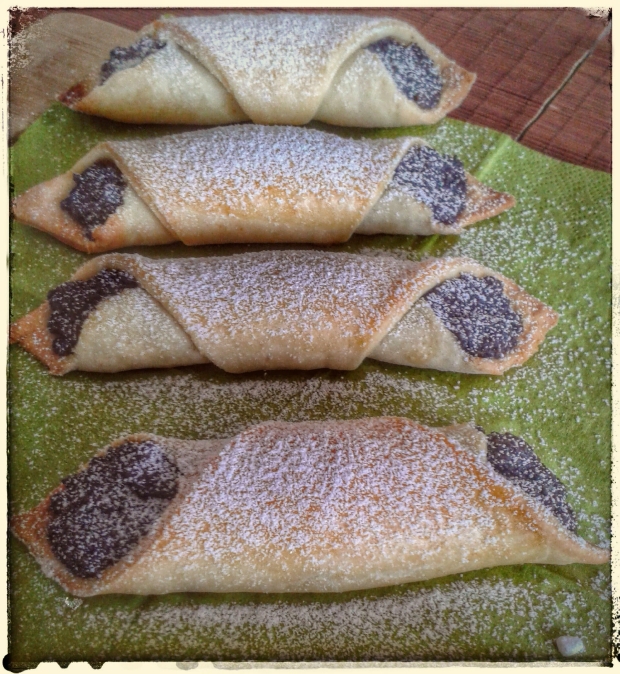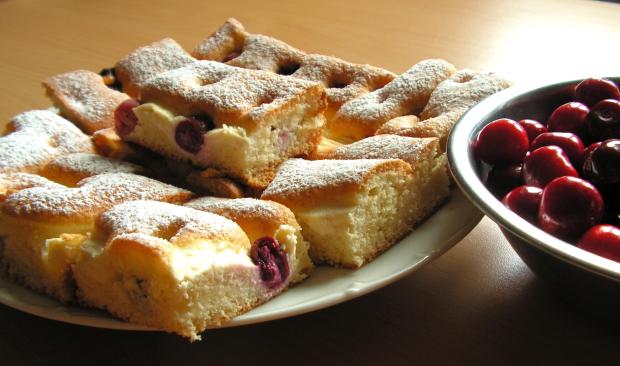Here we have a pastry that is traditionally prepared in the Czech Republic during November when we celebrate the day of Saint Martin. His feats is on 11th November, the day when 80 years old Christian was buried. Crescent rolls of Saint Martin are usually prepared from yeast dough but I have chosen different recipe that uses curd cheese (or ricotta). They are equally soft and smooth and preparation takes less time. You can choose the filling that you prefer more – from plum jam, minced walnuts and hazel nut or poppy seeds.
dough:
440 g flour
1 raising powder
250 g curd cheese or ricotta or czech tvaroh
1 egg
7 spoons of water
7 spoons of melted butter
1 egg white
powdered sugar
poppy seed filling:
300 g ground poppy seeds
100 g sugar
250 ml milk
2 spoons of butter
1 spoon of honey
First prepare the filling. In the small casserole combine ground oily poppy seeds, milk and butter. Heat it up and cook on mild fire for about 5 minutes. Then add honey and sugar. Mix well and let it cool down.
In a large bowl mix flour and raising powder. Add curd cheese (ricotta or tvaroh), 1 egg, water and tepid melted butter. Knead well to have a compact smooth dough. Divide the dough into 8 equal parts. On floured surface roll each small part into flat circle and divide it further into 4 quarters that would have shape of triangles. With a spoon put the poppy seed filling on the wide edge of the triangle and then carefully roll the dough from its wider part toward sharp end. Move the crescent rolls on the tray lined with baking paper. Cover the rolls with clean kitchen cloth and leave for 30 minutes to grow. After that remove the cloth and grease the rolls with whisk egg white. Bake tin preheat oven at 170°C until the edges start to turn golden brown. When the crescent rolls get cold dust them with powdered sugar. Bon appétit!







